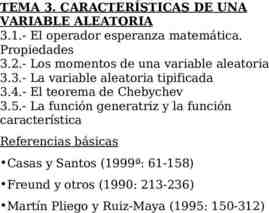Entity-Relationship Model Design Principles, Keys,
19 Slides192.50 KB

Entity-Relationship Model Design Principles, Keys, Subclasses, Exercises

Design Principles: Faithfulness Whatever relationships are asserted should make sense given what we know about the part of the real world being modeled. – If we define a relationship Stars-in between Stars and Movies, it should be a many-many relationship. Not always obvious. – E.g. Courses and Instructors: What’s the multiplicity of a relationship “Teaches”? – In such cases, please state your assumptions.

Redundancy or Right Relationships Should we have a relationship “Works-for” between “Stars” and “Studios”? It depends. We need it if a star might work for a studio in a manner unrelated to a movie.

Redundancy or Right Relationships Say everything once only! well, not always obvious. Do we still need the two-ways relationships “Owns” and “Stars-In”? Movies Stars-In Stars Owns Studios Stars Contracts Studios Movies

Redundancy or Right Relationships Can it be possible to deduce the relationship “Owns” from “Contracts”? If for every movie, there is at least one contract involving: – that movie, – its owning studio, and – some star for that movie, then we can dispense with Owns. However, if there is the possibility that a studio owns a movie, yet has no stars under contract for that movie, or no such contract is known to our database, then we must retain Owns.

Multiway relationships vs. Connecting Entity Sets Let’s suppose that contracts involve one star, one movie, but any set of studios. With this we can represent the fact that a contract can involve not more than one star and one movie, but many studios. Stars Contracts Studios Movies

Keys A key is a set of attributes for one entity set such that no two entities in this set agree on all the attributes of the key. – It’s allowed for two entities to agree on some, but not all, of the key attributes. – We must designate a key for every entity set. In E/R, we underline the key attribute(s). name Beers manf

Key for Movies Let’s consider the entity set Movie. We might assume that the attribute title is a key. However, there can be different movies with the same name: – “Godzilla” has several different versions (Japanese, American etc.). If we enforce in the database a key constraint on attribute title of Movie class, then the DBMS will not allow us to insert information about different “Godzilla’s”. A better choice is to take the set {title, year} of attributes as a key. – We still run the risk that there are two movies made in the same year, with the same title, but that’s very unlikely.

Keys for Studios and Stars For Studios: – Reasonable to assume that there are no two studios having the same name. – So, we will enforce name to serve as a key. For Stars: – We may think that the name can’t serve to distinguish two people, but – Yes! For stars the name distinguishes them since traditionally they choose “stage names”. – So, again here, we will enforce name to serve as a key.

Surrogate Keys Often, people introduce attributes whose role is to serve as a key for classes. – Companies assign employee ID’s to all employees, and these ID’s are carefully chosen to be unique numbers. – In Canada everyone has a SIN. – Students ID’s in universities – Driver license numbers – Automobile registration numbers

Entity Sets Versus Attributes I Example: Bad design name manf manfAddr Beers 1. This design repeats the manufacturer’s address once for each beer; 2. Loses the address if there are temporarily no beers for a manufacturer.

Entity Sets Versus Attributes II An entity set should satisfy at least one of the following conditions: – It is more than the name of something; it has at least one nonkey attribute. or – It is the “many” in a many-one or many-many relationship. Example: Good name Beers name ManfBy Manfs addr Manfs deserves to be an entity set because of the nonkey attribute addr. Beers deserves to be an entity set because it is the “many” of the many-one relationship ManfBy.

Subclasses Often, a class contains certain objects that have special properties not associated with all members of the class. If so, organize the class into subclasses, each subclass having its own special attributes and/or relationships. length to Stars title year Relate parent with child by a special (1-1) relationship called isa. filmType Movies Voices Cartoons isa isa weapon MurderMysteries

Inheritance in the E/R Model In the object-oriented world, objects are in one class only. – Subclasses inherit properties from superclasses. In contrast, E/R entities have components in all subclasses to which they belong. – The entity has whatever attributes any of its components has, and it participates in whatever relationships its components participate in. length to Stars title year filmType Movies Voices Cartoons isa isa weapon MurderMysteries

Components Example Take the movie Roger Rabit, which is both a cartoon and murdermystery. It will have components in all three entity sets: Movies, Cartoons, and Murder-Mysteries. The three components are connected together into one entity by the isa relationships. Roger Rabit will have all four attributes of Movies, the attribute weapon, and finally will participate in the relationship voices. length to Stars title year filmType Movies Voices Cartoons isa isa weapon MurderMysteries

Keys for entity set hierarchies In entity set hierarchies the key at root is key for all. {title,year} is the key for Movies, Cartoons and Murder-Mysteries. length to Stars title year filmType Movies Voices Cartoons isa isa weapon MurderMysteries

Exercises I Exercise 2.1.1: Let us design a database for a bank, including information about customers and their accounts. Information about a customer includes their name, address, phone, and Social Security number. Accounts have numbers, types (e.g., savings, checking) and balances. We also need to record the customer(s) who own an account. Draw the E/R diagram for this database. Exercise 2.1.2: Modify your solution to Exercise 2.1.1 as follows: – a) Change your diagram so an account can have only one customer. – b) Further change your diagram so a customer can have only one account. – ! c) Change your original diagram of Exercise 2.1.1 so that a customer can have a set of addresses (which are street-city-state triples) and a set of phones. Remember that we do not allow attributes to have nonatomic types, such as sets, in the E/R model. – ! d) Further modify your diagram so that customers can have a set of addresses, and at each address there is a set of phones.

Exercises II Exercise 2.1.3: Give an E/R diagram for a database recording information about teams, players, and their fans, including: 1. For each team, its name, its players, its team captain (one of its players), and the colors of its uniform. 2. For each player, his/her name. 3. For each fan, his/her name, favorite teams, favorite players, and favorite color. Exercise 2.1.4: Suppose we wish to add to the schema of Exercise 2.1.3 a relationship “Led-by” among two players and a team. The intention is that this relationship set consists of triples (player1, player2, team) such that player 1 played on the team at a time when some other player 2 was the team captain. a) Draw the modification to the E/R diagram. Exercise 2.1.5 : Modify Exercise 2.1.3 to record for each player the history of teams on which they have played, including the start date and ending date (if they were traded) for each such team.

Exercises III ! Exercise 2.1.6 : Suppose we wish to keep a genealogy. We shall have one entity set, Person. The information we wish to record about persons includes their name (an attribute) and the following relationships: mother, father, and children. Give an E/R diagram involving the Person entity set and all the relationships in which it is involved. Include relationships for mother, father, and children. Do not forget to indicate roles when an entity set is used more than once in a relationship. ! Exercise 2.1.7 : Modify your “people" database design of Exercise 2.1.6 to include the following special types of people: 1. Females. 2. Males. 3. People who are parents. You may wish to distinguish certain other kinds of people as well, so relationships connect appropriate subclasses of people.






